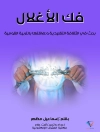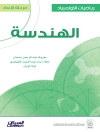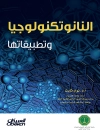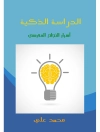This book provides a comprehensive overview of Sámi education in a historical and internationally comparative perspective. Despite the cross-national character of the Sámi population, academic literature on Sámi education has so far been published within the different nation states in the Sámi area, and rarely in English. Exploring indigenous educational history around the world, this collection spans from Asia to Oceania to Sápmi and the Americas. The chapters frame Sámi school history within an international context of indigenous and minority education. In doing so, two narrative threads are established: both traditional history of education, and perspectives on the decolonisation of education. This pioneering book will appeal to students and scholars of Sámi education, as well as indigenous education around the world.
Cuprins
Chapter 1. Introduction; Otso Kortekangas, Pigga Keskitalo, Jukka Nyyssönen, Andrej Kotljarchuk, David Sjögren and Merja Paksuniemi.- Chapter 2. Sámi schools, female enrolment and the teaching trade. Sami women’s involvement in education in early modern Sweden; Daniel Lindmark.- Chapter 3. Out of the ‘pagan darkness’. Christian education in Finnish Lapland; Ritva Kylli.- Chapter 4. Narratives of Sámi school history in Finland. Assimilation and empowerment; Jukka Nyyssönen.- Chapter 5. Indigenous people, vulnerability and the security dilemma. Sámi school education on the Kola Peninsula, 1917-1991; Andrej Kotljarchuk.- Chapter 6. Boarding schools in Soviet Lapland: The perspective of former pupils; Lukas Allemann.- Chapter 7. The development of Sámi children’s right to learn Sámi in the Russian school context; Ekaterina Zmyvalova and Hanna Outakosi.- Chapter 8. Sámi issues in Norwegian curricula. An historical overview; Torjer A. Olsen.- Chapter 9. The history of the Sámiupper secondary school in Guovdageaidnu: Language policy development; Inker-Anni Linkola-Aikio.- Chapter 10. Christian morality and enlightenment to the natural child: Third-sector education in a children’s home in Northern Finland (1907-1947); Merja Paksuniemi and Pigga Keskitalo.- Chapter 11. History of early childhood education in the Sámi language in Finland; Marikaisa Laiti.- Chapter 12. A historical perspective of indigenous education policy in Japan: The case of Ainu schools; Yoko Tanabe.- Chapter 13. Indigenous in Japan? The reluctance of the Japanese state to acknowledge indigenous peoples and their need for education; Madoka Hammine.- Chapter 14. School histories in Amazonia: Education and schooling in Apurinã lands; Pirjo Kristiina Virtanen and Francisco Apurinã de Moura Cândido.- Chapter 15. Revitalization of oral history in Wixárika community-based schools and museum: Working towards decolonization of art-education among the Indigenous peoples of Mexico; Lea Kantonen.- Chapter 16. A community of Ako, 1987-1995: Teaching and learning in the ELTU and Po Ako, Auckland, Aotearoa NZ; Mere Kepa.- Chapter 17. Education for assimilation: A brief history of Aboriginal education in Western Australia; Elizabeth Jackson-Barrett and Libby Lee-Hammond.- Chapter 17. Conclusion: Promising prospects: Reflections on research on Sámi education yesterday, today and tomorrow; Otso Kortekangas.
Despre autor
Otso Kortekangas teaches Sámi history at Stockholm University, Sweden. He is also Researcher at the KTH Royal Institute of Technology, Sweden.
Pigga Keskitalo is Associate Professor at Sámi University of Applied Sciences, Norway and Title of Docent at the University of Helsinki, Finland. She is also a part-time University Researcher at the University of Lapland, Finland.
Jukka Nyyssönen is Researcher at Ui T – The Arctic University of Norway.
Andrej Kotljarchuk is Senior Researcher at the Institute of Contemporary History, Södertörn University, Sweden.
Merja Paksuniemi is Senior Lecturer at the Faculty of Education, University of Lapland, Finland.
David Sjögren is Senior Lecturer and Director of Studies at the Department of Education, Uppsala University, Sweden.












